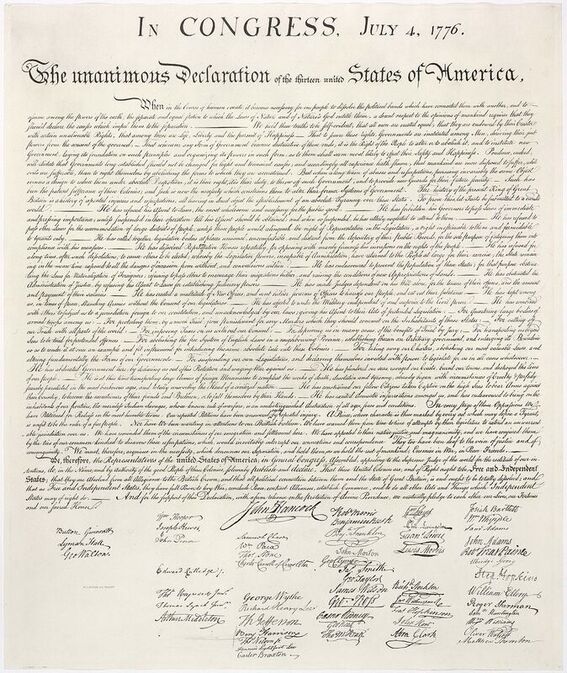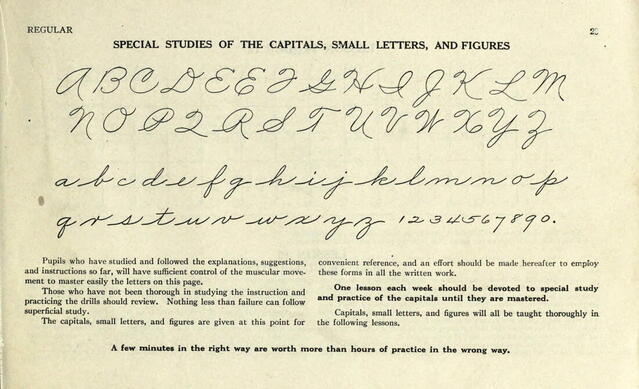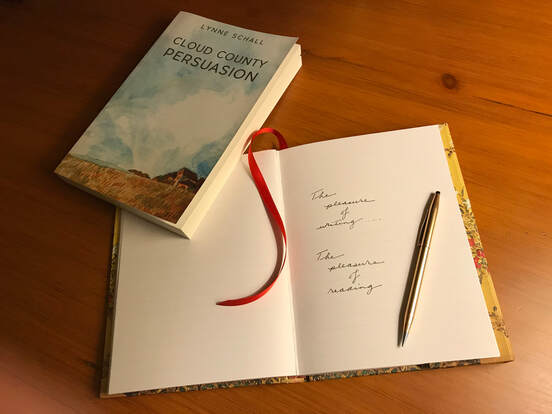Is penmanship old school now? Even archaic? Nothing more than a superfluous pastime in a high-tech society? The creators of National Handwriting Day feared it might become so, given the increase in technology and the decrease of cursive instruction in elementary schools. What is Penmanship? To be clear, a pencil or a pen is used to create penmanship on a writing surface. The world of penmanship divides in two: manuscript (print) and cursive (the fluid longhand that connects most letters in one word). Everyone seems to agree that learning to print is a necessary skill, if only to advance learning to read print. Cursive, on the other hand, is under siege in some quarters. You know what print looks like—you’re reading it. Both print and cursive come in more than one style. Here’s a sample of the Palmer method for cursive handwriting. If you attended grade school before the late 1970s, you probably studied Palmer cursive. In 1890, the Palmer Method replaced the more ornate Spenserian system in an effort to increase efficiency in American business. (The Spencerian method, developed in the mid-1800s, was an attempt to simplify and standardize the cursive styles of the day. It you see a trend here, you’re right.) The Palmer Method has remained relatively unchanged and is still used in the United States. D’Nealian script for both print and cursive was introduced into American schools in the late 1970s. Other handwriting styles are still current: visit www.drawyourworld.com/blog/examples-of-handwriting-styles.html to see a few of the common ones (accessed November 9, 2022). No matter what cursive style you learned, your script is uniquely yours. Given a large enough sample, graphologists can discern some of the writer’s personality characteristics and his or her psychological state at the time of writing. https://www.graphology.co.uk ...each one of us involuntarily expresses up to 60 graphological signs through our writing which point to unique psychological characteristics. Why Does Cursive Handwriting Matter in a Digital Age? In June 2016, the American Handwriting Analysis Foundation published the paper, “The Truth About Cursive Handwriting: Why It Matters in a Digital Age.” Visit ahafhandwriting.org/learn/library/publications/ for the full report. (updated address, Nov. 9, 2022) The Truth About Cursive Handwriting: Why It Matters in a Digital Age," American Handwriting Analysis Foundation, June 2016. Arguments Against? The Foundation discussed arguments against cursive handwriting instruction.
Arguments For? The Foundation discussed arguments in favor of cursive handwriting instruction.
How Can I Improve My Handwriting? The goal of cursive handwriting is legibility, rapidity, ease, and endurance. So…
How to Celebrate National Handwriting Day? Perhaps you’ve guessed that I’m an aficionada of cursive handwriting. And yes, I do believe it should be taught to children for all of the good reasons listed by the American Handwriting Analysis Foundation. I’m an author who uses—and who wouldn’t want to be without—a computer to write my novels. I send email and text messages as well as voice mail. But I value cursive writing for the physical act of penmanship and the personal touch it conveys to my correspondents. I don’t want to give it up. And I cherish the few handwritten letters I have from loved ones who have passed away. So how might you celebrate the holiday? Using cursive handwriting...
Until next time, best wishes and good reading!
3 Comments
Your comment will be posted after it is approved.
Leave a Reply. |
AuthorLynne Schall is the author of three novels: Women's Company - The Minerva Girls (2016), Cloud County Persuasion (2018), and Cloud County Harvest (November 2022). She and her family live in Kansas, USA, where she is writing her fourth novel, Book 3 in the Cloud County trilogy. Archives
October 2023
|





 RSS Feed
RSS Feed

